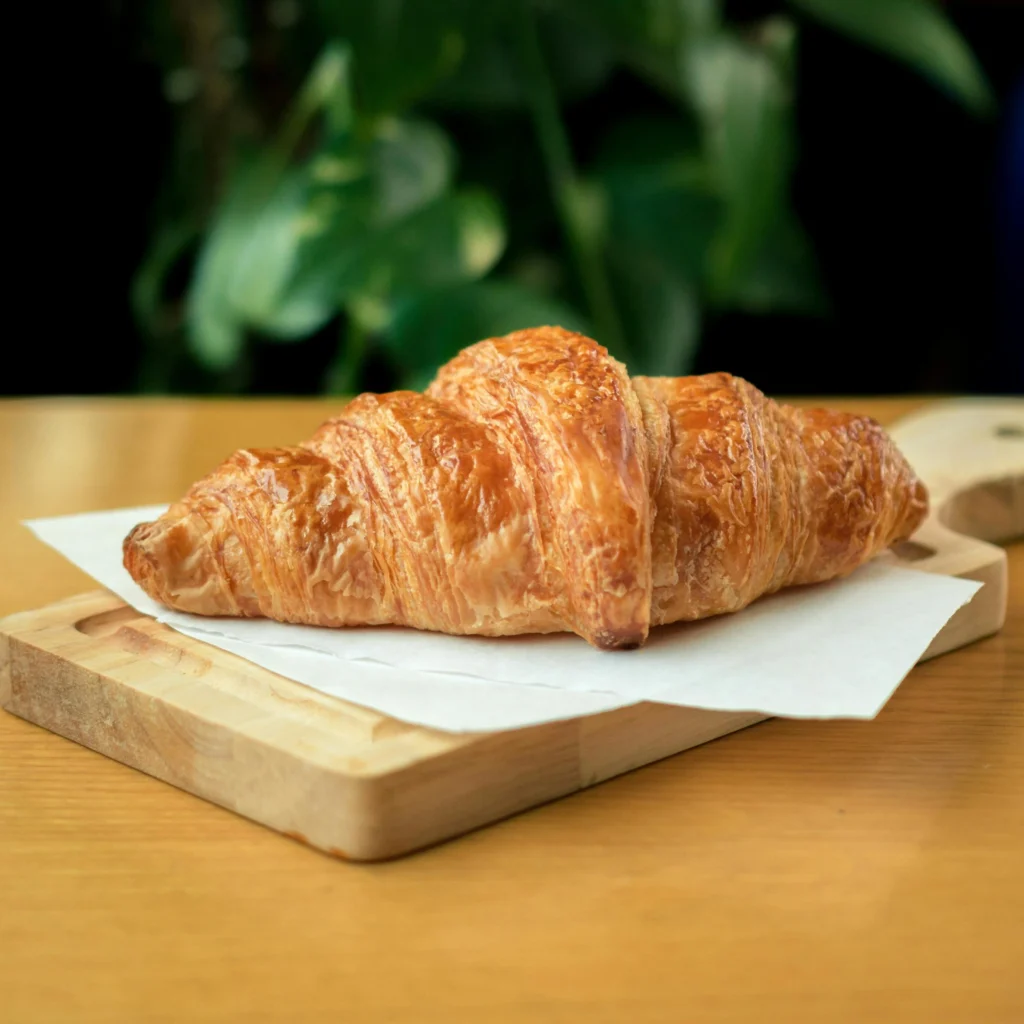Gipfeli Recipe :There’s something truly magical about the aroma of freshly baked pastries filling your kitchen. For those looking to recreate a piece of European bakery magic at home, mastering a classic Gipfeli recipe is a rewarding journey. This article is your friendly guide to understanding and baking these delightful Swiss treats, also known as Swiss croissant pastries.
We’ll demystify the process, from the correct Gipfeli pronunciation (it’s “gip-fuh-lee”!) to creating perfect flaky pastry layers through a simple laminated dough technique. Whether you’re a seasoned baker or a beginner seeking an easy breakfast pastry, this guide will help you achieve homemade Gipfeli with a buttery, tender crumb that are perfect for a traditional Swiss breakfast. Let’s embark on this Swiss baking adventure together!
Table of Contents
Short Intro About Recipe
A Gipfeli is Switzerland’s beloved answer to the croissant. It’s a pastry known for its tender, flaky layers and a slightly sweet, buttery flavor that is perfect for breakfast or an afternoon snack. While it shares similarities with its French cousin, a true Gipfeli has its own unique character. This guide provides a simple Gipfeli recipe that breaks down the seemingly complex process into easy, manageable steps. By following this easy Gipfeli recipe, you’ll be able to impress your family and friends with authentic-tasting pastries that rival those from a Zurich bakery.

Prep Time & Servings
- Preparation Time: 40 minutes (plus several hours for resting and proofing)
- Cooking Time: 15-20 minutes
- Servings: 12 Gipfeli
Equipment
To get started with your Gipfeli recipe, you will need a few basic kitchen tools:
- A large mixing bowl
- A rolling pin
- A sharp knife or pizza cutter
- Baking sheets
- Parchment paper
- A kitchen scale (highly recommended for accuracy)
- Plastic wrap
- A pastry brush
Ingredients
Having the right ingredients is key to a successful Gipfeli recipe. Here’s what you’ll need:
- ▢ 400g High-protein bread flour
- ▢ 10g Fresh yeast (or 1 tbsp instant yeast)
- ▢ 250ml Cold milk
- ▢ 50g Granulated sugar
- ▢ 1 tsp Fine sea salt
- ▢ 250g Cold, high-quality unsalted butter (for lamination)
- ▢ 1 Egg (for the egg wash)
Instructions
This simple Gipfeli recipe uses a method called lamination to create those signature flaky layers. Don’t be intimidated; just follow these steps.
Step 1: Prepare the Dough
In your large bowl, combine the bread flour, sugar, and salt. If using fresh yeast, dissolve it in the cold milk. If using instant yeast, you can mix it directly with the flour. Gradually add the milk to the dry ingredients, mixing until a shaggy dough forms. Turn it out onto a floured surface and knead for about 5-7 minutes until smooth. Do not over-knead. Shape into a rectangle, wrap in plastic, and refrigerate for at least 1 hour.

Step 2: Prepare the Butter Block
While the dough chills, take your cold butter. You can place it between two sheets of parchment paper and pound it with a rolling pin into a flat, neat rectangle about 1.5 cm thick. This butter block should be cold but pliable. Return it to the fridge if it becomes too soft.
Step 3: The First Lamination
Take the chilled dough and roll it out into a larger rectangle, big enough to encase the butter block in the center. Place the butter block in the middle and fold the two ends of the dough over it, like folding a letter. Seal the edges gently. This is your first fold. Wrap and chill for 30 minutes.
Step 4: Second and Third Folds
Roll the dough out again into a long rectangle. Perform another “letter fold” – fold one third to the center, then the other third over it. This is a double fold. Chill again for 30 minutes. Repeat this rolling and folding process one more time. After the third fold, chill the dough for at least an hour, or preferably overnight.
Step 5: Shaping the Gipfeli
Roll the chilled dough out to a thickness of about 4-5mm. Using a sharp knife or pizza cutter, cut the dough into long, narrow triangles. Make a small cut at the wide end of each triangle. To shape, gently stretch the triangle and roll it from the wide end towards the point, applying light pressure. Finally, curve the ends inward to create the classic crescent shape. Place on a baking sheet lined with parchment paper.
Step 6: Final Proofing
Cover the shaped Gipfeli with a clean kitchen towel and let them rise in a draft-free place. This proofing should take 1-2 hours. They are ready when they look puffy and slightly jiggle when you shake the tray.
Step 7: Baking to Perfection
Preheat your oven to 200°C (400°F). Gently brush the tops of the Gipfeli with the egg wash, being careful not to drip down the sides as it can impede rising. You can add a light mist of water to the oven for steam. Bake for 15-20 minutes, or until they are a deep, golden brown and beautifully puffed.
Step 8: Cooling and Serving
Transfer the baked Gipfeli to a wire rack immediately and let them cool for at least 15-20 minutes. This allows the layers to set. Enjoy them warm with jam, butter, or simply on their own!
FAQs (Frequently Asked Questions)
How does a Gipfeli differ from a croissant?
While both are laminated pastries, a Gipfeli is typically a bit smaller, sweeter, and contains slightly less butter than a classic French croissant. The layers in a Gipfeli are often more defined and the interior is tender, whereas a croissant can be more airy and intensely buttery.
What is the origin of the Gipfeli?
The Gipfeli has its origins in Switzerland and is believed to have been inspired by the Austrian kipferl. It became a staple in Swiss bakeries and evolved into its own distinct pastry, different from the French croissant that developed later.
What are the ingredients in a croissant?
A traditional French croissant is made with flour, yeast, milk, sugar, salt, and a large amount of butter for lamination. The dough is similar to the one in this Gipfeli recipe, but the techniques and butter-to-flour ratios can vary.
What is the secret to perfect croissants (and Gipfeli)?
The secret lies in three things: precise lamination to create hundreds of thin layers, keeping the dough cold at all times to prevent the butter from melting into the dough, and allowing enough time for proper proofing so the pastries become light and airy.
Notes / Tips
- Temperature is Key: The secret to flaky layers is keeping the butter cold. If the butter starts to soften or ooze during rolling, stop immediately and return the dough to the fridge.
- Patience with Proofing: Do not rush the proofing stage. Proper proofing is what gives the Gipfeli its light and airy interior.
- Variation – Nussgipfel Recipe: For a delicious twist, try making a Nussgipfel recipe. Simply spread a thin layer of almond paste or a mix of ground nuts, sugar, and a touch of egg white on the dough triangle before rolling it up.
Conclusion
Baking your own Gipfeli at home is an incredibly satisfying experience. This easy Gipfeli recipe demystifies the process, showing that with a little patience and attention to detail, you can achieve a professional-quality result. The flaky, buttery layers and tender crumb are well worth the effort. So, roll up your sleeves and give this simple Gipfeli recipe a try—your perfect breakfast pastry awaits!
For more delicious baking inspiration, why not explore our recipes for Homemade Jalbitedrinks Liquor or these delightful Blueberry Hand Pies? They are perfect for anyone with a sweet tooth!


